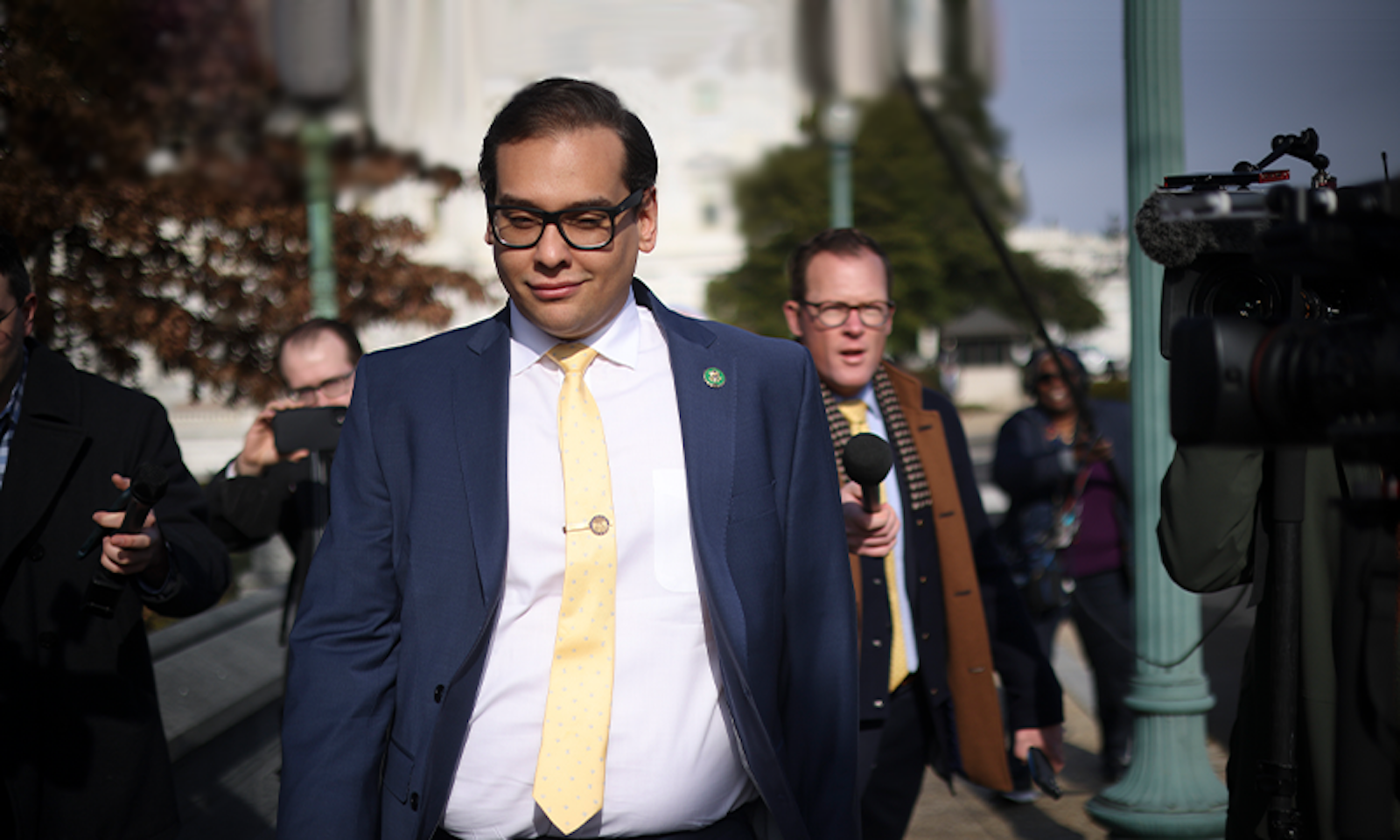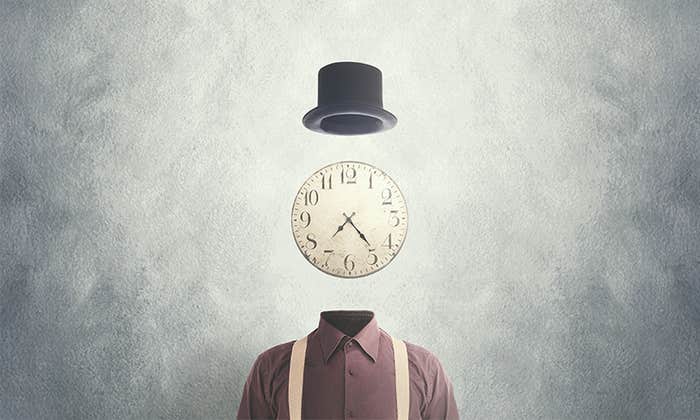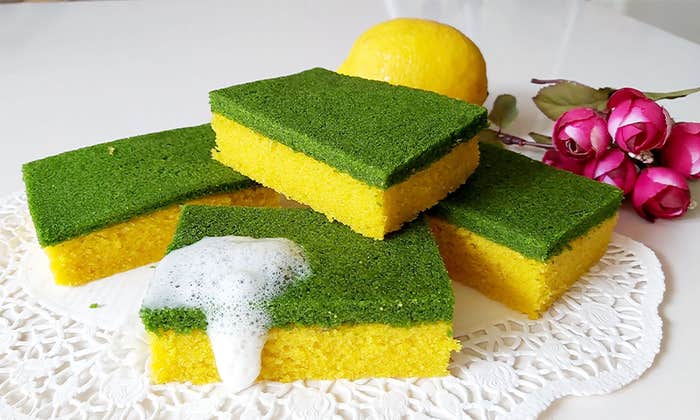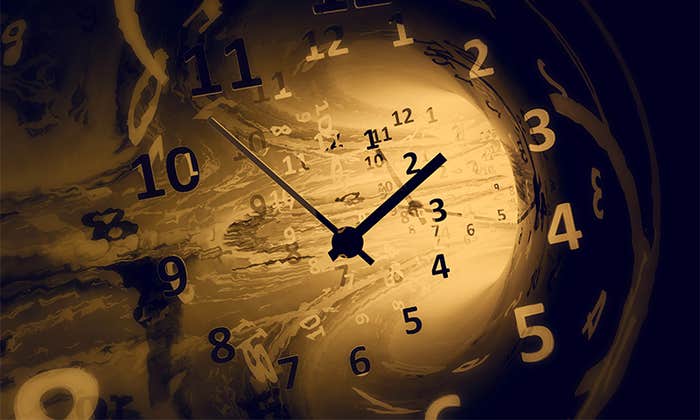In December 2022, The New York Times reported that George Santos, the newly elected Republican Congressman from New York, wasn’t who he said he was. Santos presented himself as an experienced financial professional and entrepreneur, with a degree from New York University and stints at CitiBank and Goldman Sachs. He suggested that his mother’s death was related to 9/11. He implied that his grandparents were Jewish and survived the Holocaust. But neither NYU, nor Goldman, nor CitiBank had any record of him. His mother was in Brazil in 2001. His grandparents were, by all accounts, Brazilian Catholics. Santos has since admitted to “embellishing his resume” but he continues to maintain that he has Jewish heritage, and that his mother was in the World Trade Center on 9/11. “I stay convinced that that’s the truth,” he has said.
Lying and deception are perennials of politics. Machiavelli argued in the 16th century that sometimes a leader must act as a “great pretender and dissembler.” It’s easy to see such politicians as fundamentally cynical. They seem to lie in a Machiavellian attempt to win power and control. Often, no doubt, that’s true. But cognitive science suggests the possibility of something more disconcerting at play: You really can believe your own lies. Insight into the nature of memory, based on experimental work, suggests that your awareness of the truth can bend over time. Lies can feel like the truth and so, to you, they are the truth. You’re no longer deceiving others. Instead, your brain is deceiving you.
You’re no longer deceiving others. Your brain is deceiving you.
In the 1970s, the psychologist Elizabeth Loftus began a series of experiments that upended the conventional view of memory. Previously memory was thought to function like a tape recorder. Information was permanently stored in the brain and retrieved at will. Loftus had a hunch that this wasn’t how memory worked at all. She suspected that memory might be far more malleable, and more subject to revision and distortion, than anyone suspected.
In one of her earliest studies, Loftus and her collaborators showed participants a slide sequence of a vehicle accident involving a stop sign.1 Afterward, some participants were asked about a yield sign, even though there had been no yield sign. Then, on a subsequent memory test, participants were asked whether they had seen a stop sign or a yield sign. In the control group, which hadn’t been asked the misleading question about a yield sign, 75 percent correctly remembered the stop sign. In the other group, only 41 percent did. The others wrongly remembered a yield sign. The interviewers had influenced, or even altered, the participants’ actual memories. Loftus corroborated this effect in dozens of studies, and later showed that she could implant memories of entirely fictional events in people’s minds.2
In the 1990s, researchers began asking a different question. Loftus had shown that false information supplied by others could alter memory of an event. What if the misinformation came from yourself?
Psychologists Maria Zaragoza and Jennifer Ackil designed one of the first experiments to test this possibility.3 They showed a movie clip of two brothers and their adventures at a summer camp to nearly 300 participants, who ranged in age from first grade to college. They divided the participants into two groups and asked them questions about events that had occurred in the clip, as well as about events that had not, which the psychologists made up. The first group was told they didn’t have to answer questions about the fabricated events if they didn’t want to; most didn’t. The second group was told they must answer all the questions, which pressured them to make up details about the fake events. A week later, all the participants were tested on which details had occurred in the video and which hadn’t. The first group passed the test handily. The second group, which had been forced to invent things about events they never witnessed, misremembered their fabrications as real, the psychologists explained.
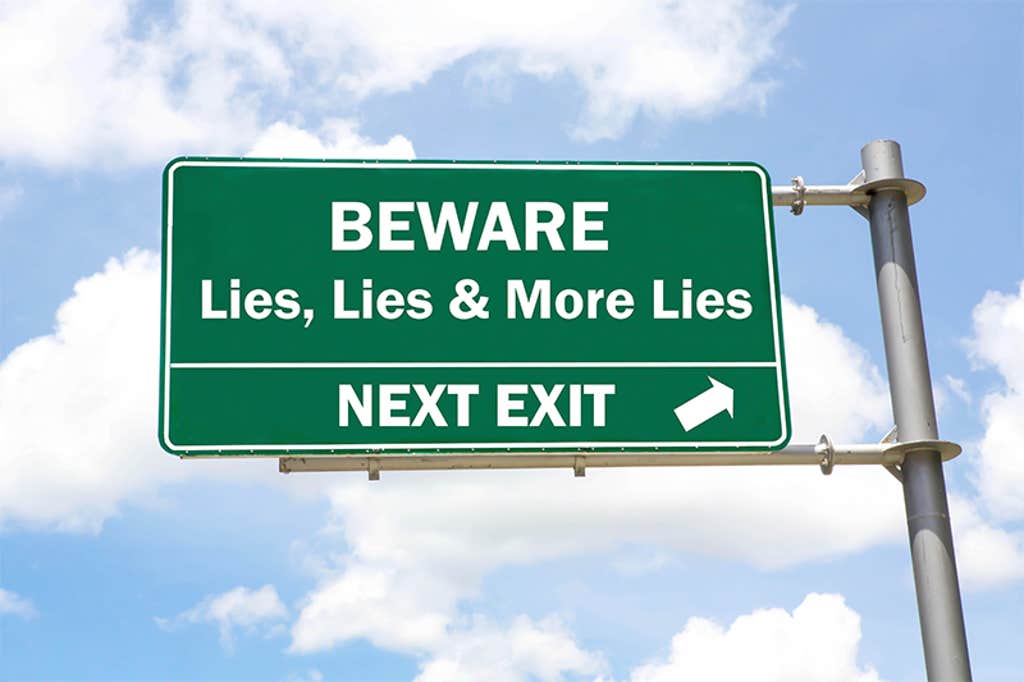
In the early 2000s, two other researchers published studies on the effects of lying on memory. Kerri True, a psychology professor, showed a group of undergraduates a video of a staged robbery.4 Part of the group was instructed to fabricate a description of the robber. One week later, all the students were asked to answer questions about what they had seen in the video. True found that fabrication corroded memory in two distinct ways. “Those who lied about the description of this character later forgot more of the [actual] details about the character,” True told me. Those students were also more likely to misremember their fabricated details as having appeared in the video. It was as though lying cemented the false details in their memory, at the expense of the real ones.
Danielle Polage, a psychologist and former student of Elizabeth Loftus, conducted a test that tried to measure the effect of lying in order to deceive, rather than simply making something up. She recruited a group of students, who completed a questionnaire ranking the probability that they had experienced certain life events as children, like whether they had ever been hospitalized, or lost in a mall.5 Two weeks later, the students were given a list of seven life events they indicated had happened to them, and one event that had not. They were instructed to tell convincing, detailed stories to an interviewer about all the events, including the one they hadn’t experienced.
A week later, the students were asked to fill out the questionnaire again. For most of the students, lying about an event strengthened their memory that such an event had never occurred. But for a sizable minority, lying about the event led them to indicate that the event had definitely happened to them. Polage had essentially planted an entirely false recollection in their memories without saying a word. She published two more studies, in 20126 and 2017,7 on the effect of deliberate lying on memory, and again found that lying about a childhood event that hadn’t happened could lead to the development of a false memory of the event.
In 2008, Zaragoza and cognitive psychologist Quin Chrobak asked another group of undergraduates to watch the video clip of two brothers at a summer camp.8 This time, some participants were told to fabricate a fictitious event that had not occurred in the video. After one week, participants were given a yes-no questionnaire testing their memory of which events had appeared in the video, and eight weeks later they were asked to provide a summary of the video. At one week, some of the fabricators had already begun to believe that their made-up events had really happened. At eight weeks, when the students were asked to describe the video, the fabricators incorporated the events they had invented into their descriptions more than 60 percent of the time. Even the students who identified their fabricated events as imaginary at one week made this mistake after eight weeks. Strikingly, their lie felt truer as time passed.
In the beginning, the participants clearly knew they had made up an event. “But when you test their memory later, you can get error rates over 50 percent,” Chrobak told me.
Although these studies used different methods, they all found a remarkably consistent effect of fabrication and lying on memory. A leading explanation has to do with how the brain categorizes memory. In 1993, three psychologists published a paradigm for understanding how the brain keeps track of a memory’s origin.9 They argued that, in fact, it doesn’t keep track at all.
“People do not typically directly retrieve an abstract tag or label that specifies a memory’s source,” the authors wrote. Instead, the brain unconsciously assesses a memory for clues to decide whether the memory was internally generated—such as a lie—or externally generated, as with an actual experience. And among the latter, whether information originated from a trustworthy source or not, or from one person rather than another. In short, our brains consider the overall texture of a memory, through unconscious processes, in determining its likely source and validity. These unconscious processes, the authors argued, ultimately influence our development and expression of knowledge and belief, and color our engagement with the world.
What clues does the brain use to make these unconscious judgments? “When you’re trying to figure out a source for a memory,” Polage said, referring to unconscious processes in the brain, “you look at a few things. First, perceptual. ‘Can I actually hear someone’s voice speaking to me?’ Then, context. ‘I should remember where it was. I should remember who was there.’ And then there’s emotion. ‘I remember walking in and I was the only one who wasn’t dressed up; I remember feeling really awkward.’” If a memory contains such richness, then the brain is more likely to determine that it corresponds to a real event.
Lying cements the false details at the expense of the real ones.
Polage was personifying processes that transpire beneath the veneer of consciousness. What enters awareness, ultimately, is the subsequent sense of where a memory came from. If our brains simply tagged every memory with a label specifying its origin, and filed them together, then memory might be less prone to error. But that seems not to be the case. Because we are largely unaware of these cognitive processes, they can be susceptible to mistakes—especially if we happen to embellish a lie with the sort of characteristics that the brain uses to parse what’s real from what isn’t. We can corrupt these circuits without any recognition that we have done so.
If you tell a lie, the source-monitoring framework should identify the lie as a lie when you remember it later. That’s not a conscious process; we’re not choosing to remember or neglect that something we said wasn’t true. We simply remember the lie as a lie, most of the time, because of the texture and shape of the memory as assessed by subterranean levels of cognition. A lie likely has less perceptual and contextual detail, because you invented it rather than experienced it. Your brain notices that. The associated cognitive processes are different too, since creating a lie has been shown to be more demanding than telling the truth. Your brain also notices that. Your experience of this process is just the experience of correctly remembering that when you told your mother in high school that you spent the night at John’s house instead of Suzy’s, you were lying.
But we can corrode this process by telling a lie in a certain way. “When you’re fabricating lots of details, you’re going to be more likely to see source errors,” True explained to me, and “the more plausible the detail, the more likely you are to get confused about the source of it.” In other words, the more you embellish the lie, and the more believable you make it, the more likely you are to confuse yourself later that it truly happened. If you created a whole litany of things that occurred at John’s house that night in high school, the better to deceive your mother, then you are more likely to misremember that lie as the truth in the future.
Chrobak said that if a lie or fabrication provides an explanation for something, it’s more likely to become confused with what’s true. “People are causal monsters,” he told me. “We love knowing why things happen,” and if we don’t have an explanation for something, we “like to fill in the gaps.” The pressing human need to fill those gaps, Chrobak said, might also pertain to beliefs we hold about ourselves. After his arraignment on 13 criminal counts, Santos told reporters he believed he was innocent. “I will not resign,” he said, “I’m gonna fight the witch hunt.” If people see themselves as persecuted, then their lies might take on even greater significance for themselves—they become proof of their innocence.
Another important factor underlying this effect is repetition. “If I tell the lie to multiple people,” True explained, “I’m rehearsing the lie.” And rehearsing a lie seems to enhance it. “The more you repeat something,” Chrobak said, “the more you actively imagine it, the more detailed and vivid it becomes,” which further exploits the brain’s tendency to conflate detail with veracity.
Further, Polage explained, “the more you access a memory, the more likely it is to be altered.” If someone is lying, Polage said, then “every time they access the false memory, they add detail to it, they strengthen it, they become more confident in it, and they might become more confident that the false memory they are building is actually true.”
But “it’s not only what you rehearse, it’s what you don’t rehearse,” True said. When lying, you’re also not rehearsing the authentic details. “If you don’t access a memory,” Polage said, “the level of detail in the memory fades. You’re strengthening the false memory and weakening the real one.”
I suggested to True that because memory is essentially reconstructed or reassembled whenever we remember, fabrication might use similar neural pathways. If the brain uses the same circuits for both, it might be easier to confuse the two. “I think that’s a great way of putting it,” True said, mentioning that some research suggests that the neural circuitry involved in imagining an event is also employed in remembering one. “This is memory functioning as it should,” Polage said, but “we’re messing it up” with lies. “We give the false memories the characteristics of true memories, and so we blur the line.”
I asked Chrobak if he thought people in positions of power and authority come to believe their own lies. “Yes, absolutely,” he said. “This is on psychologists’ radars now. People need to talk about this and why this is happening. A percentage of Americans believe demonstrably false lies. Whether they’re their own or politicians’, figuring out why this is taking place is relevant to our democracy. It’s really important.” That’s no lie. ![]()
Clayton Dalton is a writer in New Mexico, where he works as an emergency physician.
References
1. Loftus, E.F., Miller, D.G., & Burns, H.J. Semantic integration of verbal information into a visual memory. Journal of Experimental Psychology: Human Learning and Memory 4, 19-31 (1978).
2. Loftus, E.F. & Pickrell, J.E. The formation of false memories. Psychiatric Annals 25, 720-725 (2013).
3. Ackil, J..K. & Zaragoza, M.S. Memorial consequences of forced confabulation: Age differences in susceptibility to false memories. Developmental Psychology 34, 1358-1372 (1998).
4. Pickel, K. When a lie becomes the truth: The effects of self-generated misinformation on eyewitness memory. Memory 12, 14-26 (2004).
5. Polage, D.C. Fabrication deflation? The mixed effects of lying on memory. Applied Cognitive Psychology 18, 455-465 (2004).
6. Polage, D.C. Fabrication inflation increases as source monitoring ability decreases. Acta Psychologica 139, 335-342 (2012).
7. Polage, D. The effect of telling lies on belief in truth. Europe’s Journal of Psychology 13, 633-644 (2017).
8. Chrobak, Q.M. & Zaragoza, M.S. Inventing stories: Forcing witnesses to fabricate entire fictitious events leads to freely reported false memories. Psychonomic Bulletin & Review 15, 1190-1195 (2008).
9. Johnson, M.K., Hashtroudi, S., & Lindsay, D.S. Source monitoring. Psychological Bulletin 114, 3-28 (1993).















